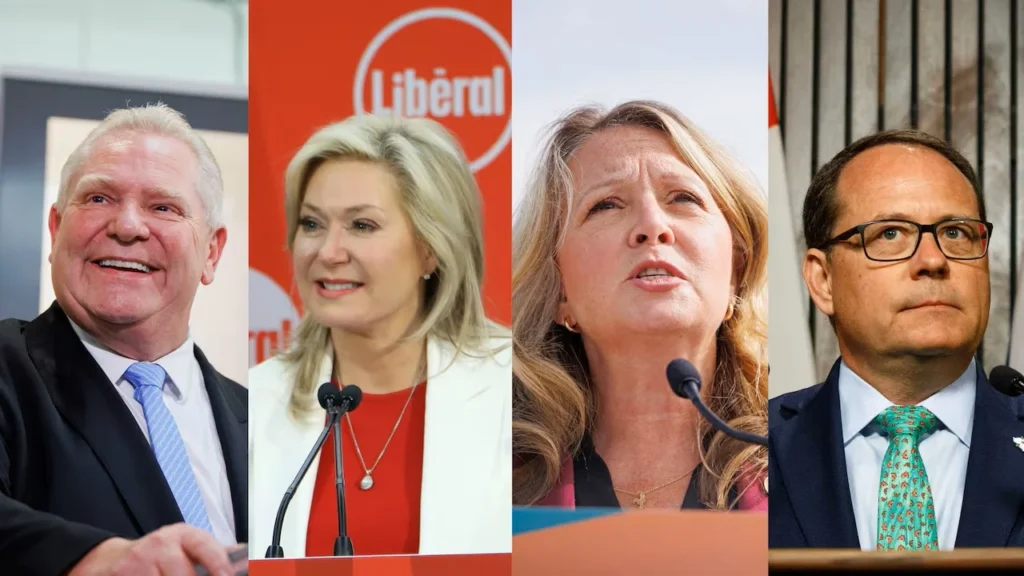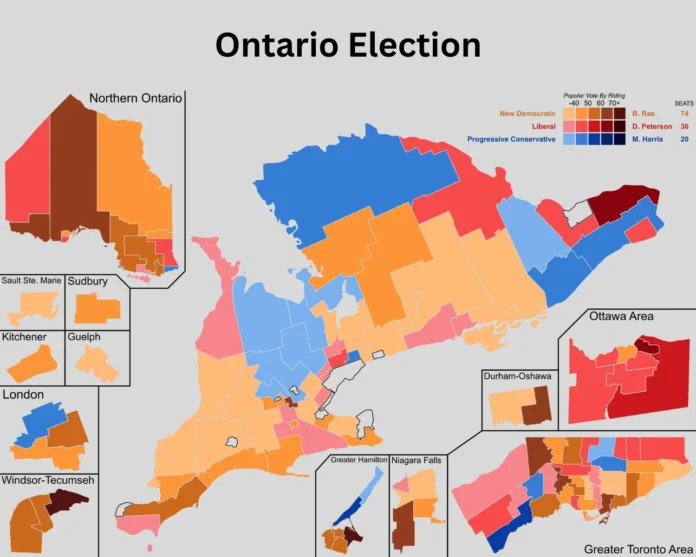Introduction
The Ontario election has taken an unexpected turn with Premier Doug Ford’s decision to call an early vote, catching opposition parties off guard. As the snap winter election reaches its midpoint, the Progressive Conservatives maintain a strong lead in the polls, while their main opponents are still struggling to finalize their platforms. The unexpected timing of the election has ignited debates about its strategic intent and its broader impact on both political parties and voter participation.
The ramifications of this decision will likely extend beyond election day, shaping campaign strategies and voter sentiment for years to come. Here are five key insights into this evolving political contest, each highlighting different facets of this highly unusual and politically charged race.
The Strategic Timing of the Ontario Election
Premier Doug Ford’s decision to call an election more than a year before the scheduled date has raised questions about political strategy. Some analysts suggest that the move was designed to catch opposition parties off guard, limiting their ability to develop comprehensive platforms. Ford has defended the decision, citing the need for a stronger mandate in light of economic uncertainties, including potential U.S. tariffs.
The decision also aligns with Ford’s broader political strategy, as securing another term now could allow the Progressive Conservatives to shape policy without the distraction of an impending campaign. However, critics argue that the early call could backfire, as voters may view it as a calculated power grab rather than a necessity dictated by economic concerns.
Opposition Parties Struggling to Finalize Platforms
Despite reaching the halfway mark of the campaign, the major opposition parties—the Liberals and the NDP—have yet to release fully costed platforms. Liberal Leader Bonnie Crombie acknowledged the challenge of preparing a detailed plan on short notice, while NDP Leader Marit Stiles has also stated that her party’s full platform is forthcoming. Meanwhile, the Green Party, led by Mike Schreiner, is the only party to have released a fully costed platform, emphasizing transparency and fiscal responsibility.

The delay in platform releases has left voters with limited insight into alternative policy directions, potentially weakening the opposition’s ability to mount a strong challenge. Without clear policy roadmaps, both the Liberals and the NDP may struggle to inspire confidence among undecided voters, further solidifying the Progressive Conservatives’ advantage.
Polls Indicate a Strong Lead for the PCs
Current polling data suggests that Ford’s Progressive Conservatives are on track for a decisive victory, with projections estimating 45% of the popular vote and around 100 seats. Political analysts note that the short campaign period has provided little time for opposition parties to gain traction. Whether the Liberals or the NDP emerge as the main opposition party remains uncertain, as a split vote could further solidify a PC majority.
The polls indicate that voters may be leaning towards stability in uncertain economic times, favoring the incumbents who have already established their governance strategies. However, some political observers caution that last-minute shifts are still possible, particularly if opposition parties manage to mobilize grassroots support and deliver impactful messaging in the final weeks.
The Impact on Voter Engagement
The timing of the election—held in February—may also affect voter turnout. Experts point out that winter elections are rare and could discourage participation, particularly due to travel schedules and unpredictable weather conditions. Some observers believe that the short campaign, coupled with a lack of large-scale events, has resulted in a relatively subdued election atmosphere.
Voter apathy may play a significant role in shaping the final results, as lower engagement often benefits incumbents by reducing the potential for protest votes. Additionally, the cold weather and logistical challenges of a winter election could disproportionately affect elderly and rural voters, raising concerns about equitable access to polling stations. As campaigns ramp up their efforts to increase voter participation, the effectiveness of digital outreach and early voting options may prove critical in determining overall turnout levels.
Challenges for the Opposition
Political strategists argue that opposition parties should have been better prepared, as early election rumors had circulated for months. Conservative strategist Kayla Iafelice has suggested that both the NDP and Liberals lack the necessary infrastructure and resources to respond quickly to an unexpected election call. While opposition leaders contend that the abrupt timeline has hindered platform development, critics argue that effective political planning should anticipate such scenarios.
The unpreparedness of opposition parties raises broader questions about their long-term viability, particularly in an era where snap elections are becoming more common across Canada. If the opposition fails to effectively challenge the Progressive Conservatives this time, it may need to reassess its approach to rapid-response campaign planning, grassroots mobilization, and policy development in preparation for future elections.
Conclusion
As Ontario moves closer to election day, the political landscape remains dynamic. With the Progressive Conservatives maintaining a strong lead, opposition parties face increasing pressure to present compelling alternatives. Voter engagement, party strategies, and the overall impact of this snap election will continue to unfold in the coming weeks.
The broader implications of this election will likely extend beyond just the immediate results, influencing party dynamics and strategic decisions in future elections. Whether the early election call was a tactical masterstroke or a risky gamble remains to be seen, but its consequences will undoubtedly shape Ontario’s political landscape for years to come.


